Haley Nelson, Amin Mojtahedi, and Daniel J. Michaud of HGA examine how people-first design puts employees’ needs at the forefront and results in a people-first, digitally led work experience.
– Stay tuned as we share more 2023 trends for the entire month of December & beyond –
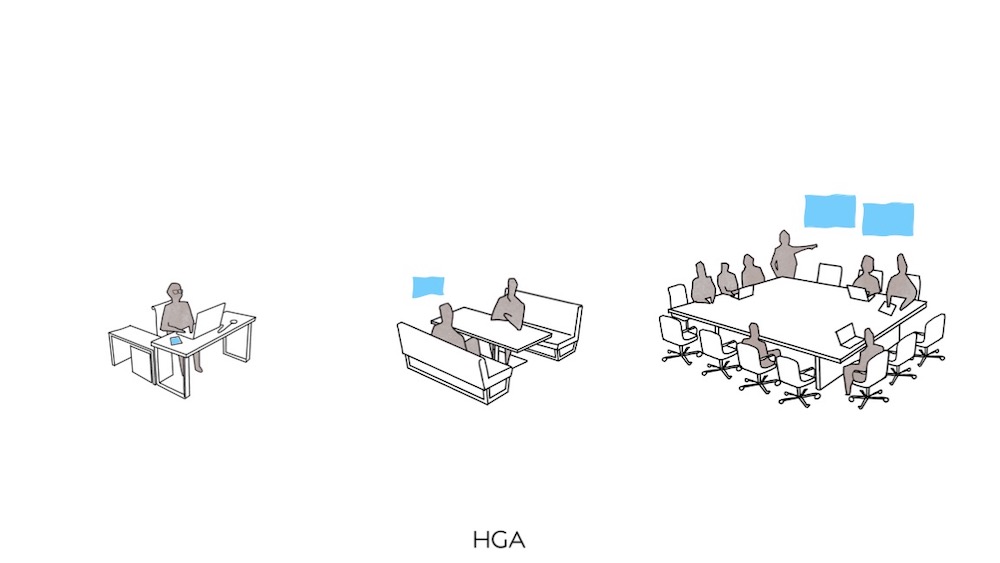
An unforeseen side effect of the pandemic is that it has reignited employees’ desires for something more when it comes to their workspaces—many are now voicing their preferences for maintaining flexibility and authorship of their workdays, choosing how and when they come into the office, and deciding for how long. More than ever, work happens across a spectrum of spaces, and companies are looking at how these hybrid behaviors can lead to wholly new ways of working. These factors naturally lead to a shift in workplace design thinking that should continue to evolve throughout 2023.
A fresh design approach starts with supporting individuals’ changing behaviors in tandem with their colleagues and, from there, spaces must be modified to support those behaviors in harmony with the technology to enable them. Office spaces—both physical and virtual—should be designed around the worker, not the work itself. This people-first mindset puts employees’ needs at the forefront and results in a people-first, digitally led work experience.
Adopting a people-first design approach sets a standard for an inclusive and technologically rich work environment that promotes well-being and productivity. Such an approach will support the flexibility of a fluid work stream long into the future—helping all employees to effectively contribute, share and learn, no matter where or how they do their best work. It’s the digital technologies that bring this approach to life, allowing the virtual office to serve as an extension of the physical office in a manner that offers the same opportunities for everyone to thrive.
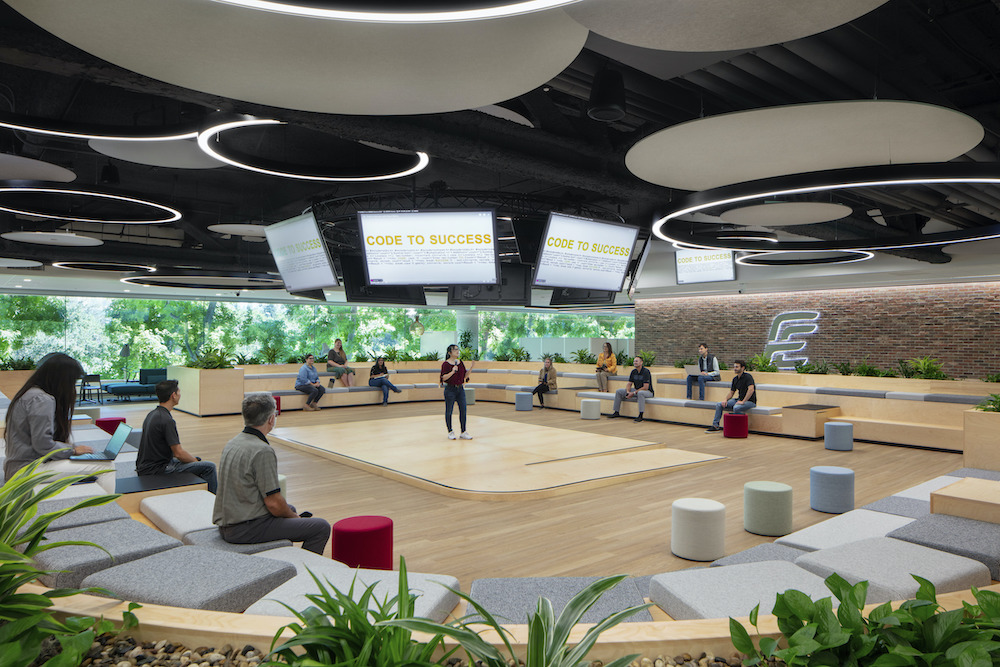
A New Perspective On The Office
While attendance at the office is fluid, people must be the central focus in workplace design. Our research team has collected data over the last two years that is used to guide the new office, focused on creating a multitude of environments that enable work across physical and virtual realms.
For these changes to be successful, they should be holistic, allow for evolution and focus on the unique ways in which employees prefer to work, regardless of where the work is taking place.
Truly people-first workspaces will:
- Enhance culture and belonging;
- Support a spectrum of work processes; and
- Make any trip to the physical office an experience that is worthwhile.
These outcomes are only achievable when useful technology that supports connection and productivity is integrated as a part of a seamless hybrid experience.
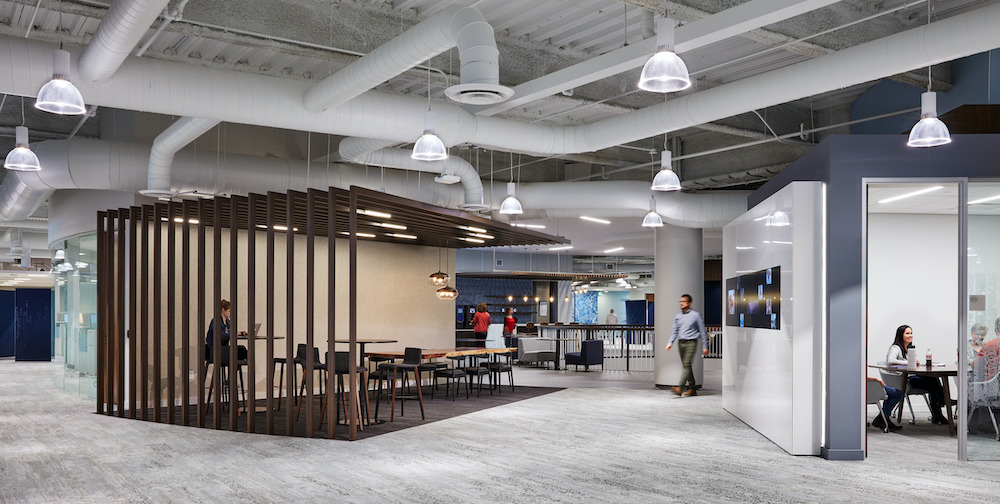
A Culture Of Belonging
Strengthening workplace culture and enhancing an employee’s sense of belonging are not only necessary, but they are also invaluable. One way to enhance these components via a people-first design approach is to create a more intentional workplace through “virtual first empathy.” Under this ethos, offices prioritize hybrid collaboration, with open work areas fitted with interactive conferencing tools, so that both in-person and virtual employees can operate on an equal playing field. Zoom and similar technologies that can be seamlessly integrated into offices have opened the door for more equal participation, when implemented correctly.
By putting the person first and embracing a flexible and hybrid future, a digitally led mindset will support the evolving nature of work. This means that no matter if someone is in person, remote or flexible—which can change day-to-day or at different phases— a workplace approach can be developed that supports this fluid work stream. This approach allows people to contribute and decide where they do their best work.
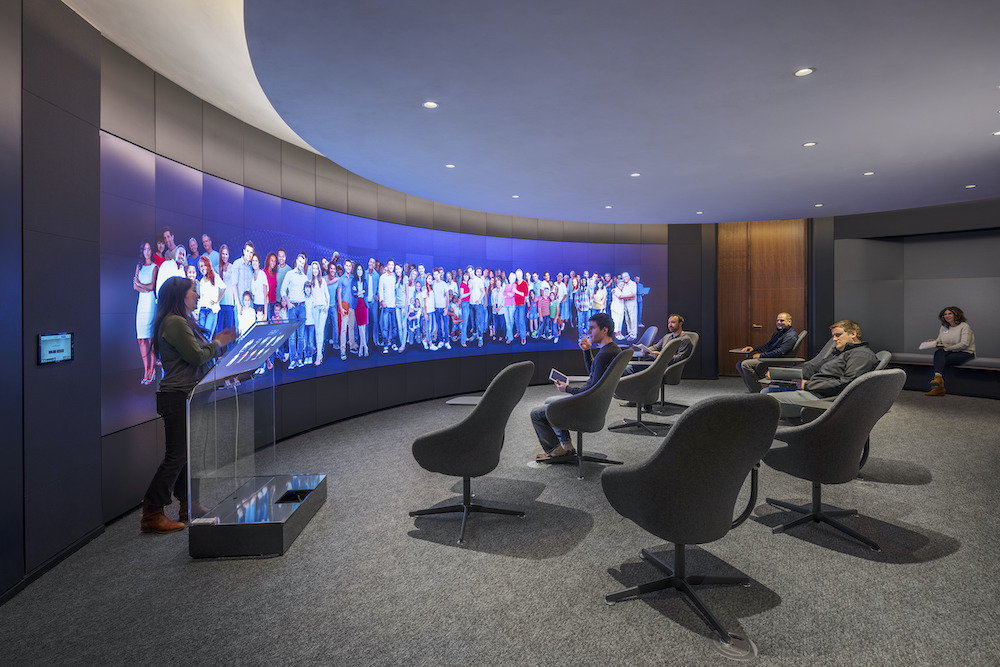
As the industry adjusts to the new normal of hybrid working, we have developed the concept of “AV Equity.” This idea addresses how all employees in a meeting—whether joining remotely or sitting at the conference table—can participate in an equitable manner, being able to see and be seen, hear and be heard. AV Equity fosters the alignment of properly designed spaces, furniture, technology systems and meeting etiquette to level the playing field and foster a sense of belonging for all participants.
AV Equity considers a range of issues at both the work office and home office. Some of these issues are obvious, such as the need to have robust and resilient communications technologies. Others, such as codifying the etiquette for a hybrid call, are harder to define and agree upon. Employees also play a part, from building new habits for leading and participating in meetings to setting up their home offices with the right features to support this new form of collaboration.
Developing the physical office in this manner will also support and teach new behaviors that contribute to a company’s overall culture. Not only is the design approach people-first, but the space itself can provide cues to employees to put them in the same empathetic, people-first mindset. In this way, new behaviors can be co-created through the space itself, not just mandated by leadership.
For example, workstations and conference rooms may provide details about how to “reset” the space to promote ownership and ensure the next people to use those spaces have a positive experience. The office may display a digital dashboard to see where others are working to make collaboration easier. Sound may be regulated through acoustical treatments that prevent sound from transmitting through the walls and reduce distractions.
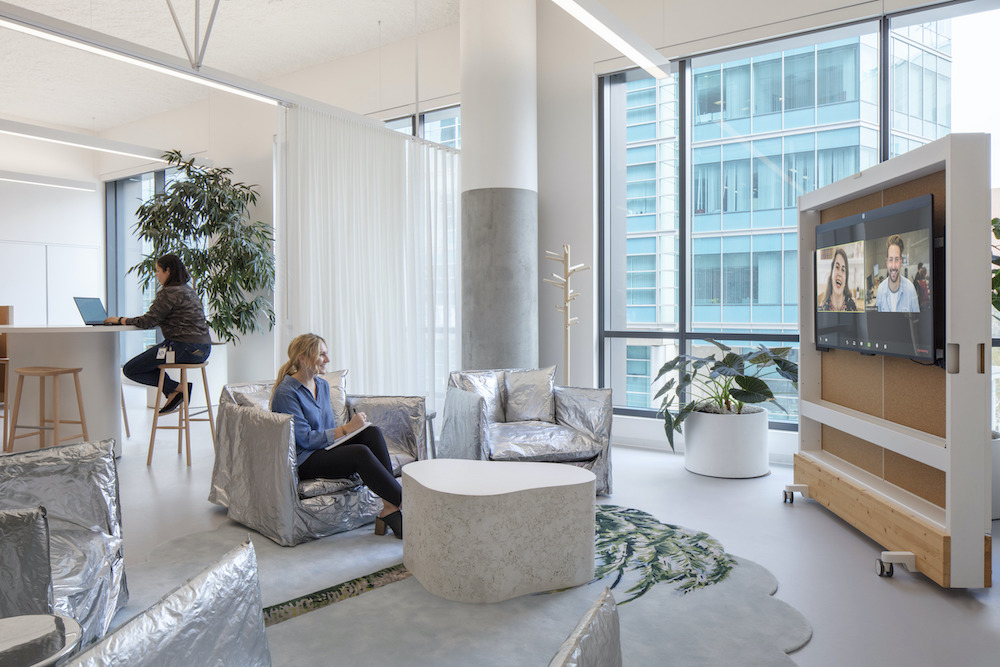
The workplace will continue to change, so designers and companies will have the greatest opportunity for success if they integrate an iterative approach. Constant testing and retesting of what works best as employees begin to interact with and experience physical and virtual work environments will lead to the modifications that provide long-term sustainability.
In the case of a recent HGA client, the company surveyed 1,200 employees prior to redesigning their office. The corporation identified that team members most valued smaller meeting rooms, seamless connectivity with global team members and new technology to support productivity in open collaboration areas.
A people-first mindset develops a sense of corporate empathy that leads to an equitable workplace and thriving employees. It also naturally brings about the integration of useful technology that creates a digitally led work experience, as the technological components meet workers’ desires and provide solutions to their pain points. A people-first workplace is the workplace of 2023 and, hopefully, the future.

